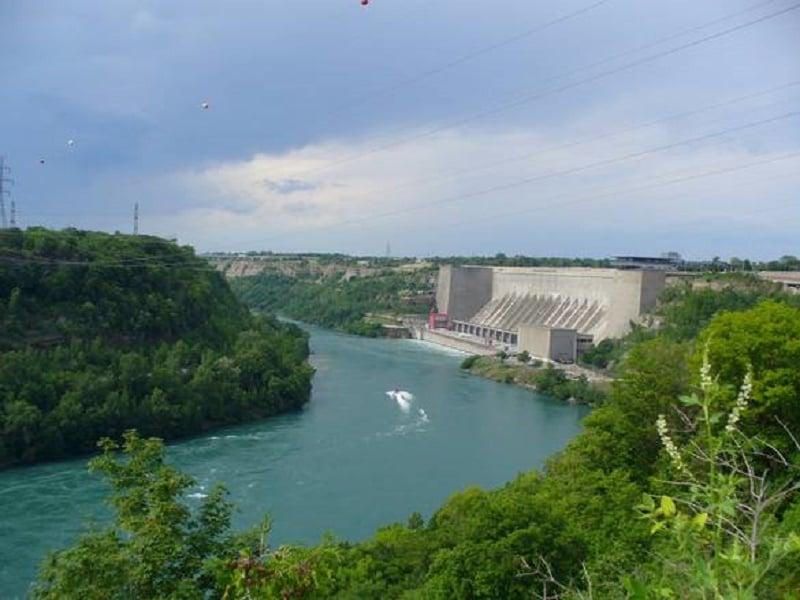

Power in Niagara
In the later part of the 19th century the development of hydroelectricity at Niagara provided the world with a new source of clean and easily renewable power. No longer was it necessary to rely on costly and dirty coal to produce this power. As early as 1893 water was being diverted from the Niagara River above the falls and taken to power plants to operate turbines which in turn drove machinery by means of shafts, belts and pulleys. This was direct current power.
Nikola Tesla, a brilliant electrical engineer, changed the world in the mid-1890’s when he developed a system of alternating current. This system now enabled power to be transmitted great distances compared to the direct current, which at times was limited to a small radius of distribution. The system was put into use on November15, 1896 when electrical power was transmitted from Niagara Falls, New York to Buffalo, New York.
By 1909 there were 20 manufacturing plants operating on alternating current (AC) on both sides of the Niagara border. Bythe beginning of the 21st century there were four generating plants on both sides of the border of the Niagara River. Approximately 4.4 million kilowatts of power is generated from these plants. The three on the Canadian side of the border at Queenston produce 2.0 million kilowatts and the Robert Moses Generating plant at Lewiston, New York produces 2.4 million kilowatts of power. That’s enough power to light up 24 Million,100-watt bulbs!


























